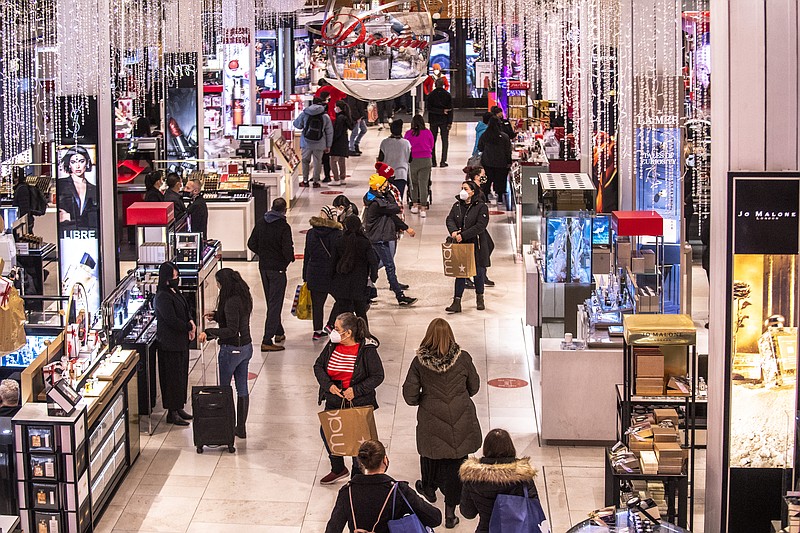Americans, beset by product shortages, rising prices and the arrival of omicron, sharply cut their spending in December after a burst of early spending in the fall boosted this year's holiday shopping season.
Retail sales fell a seasonally adjusted 1.9% in December from November when sales increased 0.3%, the U.S. Commerce Department said Friday. Sales rose 1.8% in October. Still, retail sales surged 16.9% compared with December 2020.
Spending declines were spread across numerous sectors. Department store sales fell 7%, restaurant sales slipped 0.8% and online sales fell 8.7% compared with the previous month, according to the report.
Omicron was identified by the World Health Organization in late November, and the December report from the Commerce Department is the first to capture some of its effect on consumer behavior.
The monthly retail report covers only about a third of overall consumer spending and doesn't include money spent on things like haircuts, hotel stays or plane tickets, all which tend to see business tail off when anxiety about covid-19 rises. In November, restaurant sales posted a 1% gain -- the sector's best performance since July.
And it's been a strong year for retailers as spending patterns shifted, but remained elevated.
The omicron variant has led to widespread worker shortages with many people calling out sick, and supply shortages have curtailed what makes it to store shelves. Stores and restaurants have slashed operating hours or remained closed on days they had previously been open.
This week, Lululemon warned that fourth-quarter sales and profits will likely come in at the low end of its expectations as it grapples with the variant's fallout.
"We started the holiday season in a strong position but have since experienced several consequences of the omicron variant, including increased capacity constraints, more limited staff availability, and reduced operating hours in certain locations," said Chief Executive Officer Calvin McDonald.
And inflation has settled in across almost every level of the economy, forcing the Federal Reserve to stop describing the rising prices as "transitory."
Inflation jumped at its annual fastest pace in nearly 40 years last year, a 7% spike that is increasing household expenses and biting into wage gains. And the largest price increases are hitting where Americans can feel it, with the cost of homes, cars, clothes and food racing higher.
Raquel Schuttler, 53, who works in fashion sales, says the surging costs for food has have a psychological impact on her spending everywhere.
The Atlanta resident, who does grocery shopping for her 17-year-old son and her fiance, used to make intermittent trips to the grocery store in between big shopping trips but those smaller trips are now costing much more. She has pulled back lunches at the mall with friends to avoid the temptation to shop there.
"I am being much more conservative," she said. "I stopped any kind of going out impulsively."

